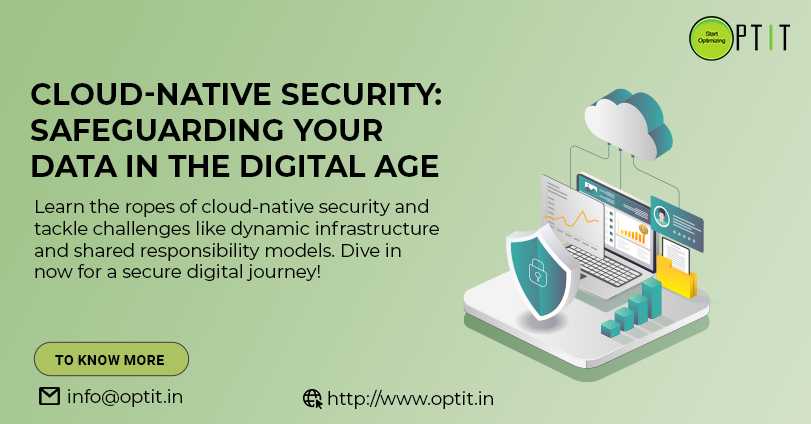

In an era dominated by digital transformation, businesses are increasingly leveraging cloud-native architectures to enhance agility and scalability. While this transition brings forth numerous benefits, it also raises critical concerns about data security. Businesses of all sizes rely on mountains of information to make decisions, optimise processes, and deliver value to their customers. But with great power comes great responsibility – the responsibility to protect this valuable data from ever-evolving threats.
Cloud-native security refers to the set of practices, technologies, and policies designed to protect applications, data, and infrastructure in cloud environments. Unlike traditional security measures, cloud-native security is tailored to the dynamic and distributed nature of cloud-native architectures. It is not just about securing the cloud; it’s about building security into the very fabric of how you develop, deploy, and manage your applications in the cloud. It’s a paradigm shift from the traditional bolt-on security approach to a more proactive and integrated strategy. In this blog post, we explore the key aspects of cloud-native security and how organizations can safeguard their data in the digital age.
Dynamic Infrastructure: The dynamic nature of cloud environments, with instances being created or terminated on-demand, poses challenges for traditional security models. Continuous monitoring and automated responses are necessary.
Shared Responsibility Model: Cloud service providers follow a shared responsibility model, where they secure the infrastructure, and users are responsible for securing their data and applications. Understanding and fulfilling this shared responsibility is the key.
Ephemeral Workloads: Cloud-native applications often use ephemeral workloads like serverless functions. Protecting these transient components requires specialized security measures.
Increased attack surface: With more entry points, attackers have more opportunities to exploit vulnerabilities.
Data Encryption: Encrypting data both in transit and at rest is crucial for maintaining confidentiality. Utilizing encryption protocols like TLS for network communications and encrypting data stored in databases or object storage adds an extra layer of protection.
Container Security: With the rise of containerized applications, securing the entire container lifecycle is imperative. This includes scanning container images for vulnerabilities, implementing secure container orchestration, and ensuring runtime security.
Microservices Security: Cloud-native applications are often built using microservices architecture. Securing the interactions between microservices, authenticating communication, and monitoring for abnormal behaviors are integral aspects of microservices security.
API Security: As applications increasingly rely on APIs for communication, securing these interfaces becomes critical. API security involves proper authentication, authorization, and validation of API requests to prevent unauthorized access or data breaches.
Logging and Monitoring: Cloud-native security relies heavily on comprehensive logging and monitoring. Implementing solutions that provide real-time visibility into system activities, anomalous behavior detection, and incident response capabilities is vital.
Implementing cloud-native security requires a shift in mindset and the adoption of new tools and practices. Here are some key steps you can take:
 Shift left: Embed security into every stage of the SDLC, from code development to deployment and monitoring.
Shift left: Embed security into every stage of the SDLC, from code development to deployment and monitoring.
Automate as much as possible: Leverage automation tools to scan for vulnerabilities, detect threats, and respond to incidents quickly.
Adopt a zero-trust approach: Implement least-privilege access and limit lateral movement within your cloud environment.
Use cloud-native security tools: Invest in solutions specifically designed for securing cloud-native applications, such as container image scanners and Kubernetes security platforms.
Build a culture of security: Make security everyone’s responsibility, not just the IT team’s. Train your employees on cloud security best practices and encourage them to report suspicious activity.
By embracing cloud-native security, you can build a secure foundation for your cloud applications and protect your data in the digital age. Remember, security is not a one-time event; it’s an ongoing process. By adopting the right tools, practices, a security-first mindset, continuously monitoring, and improving your security posture, you can stay ahead of the threats and ensure your data remains safe and sound.
By taking proactive steps and adopting a cloud-native security approach, you can harness the power of the cloud while mitigating the risks and safeguarding your data for a secure and successful future.
Reach out to us at info@optit.in for insights into the latest advancements in Cloud-Native Security.